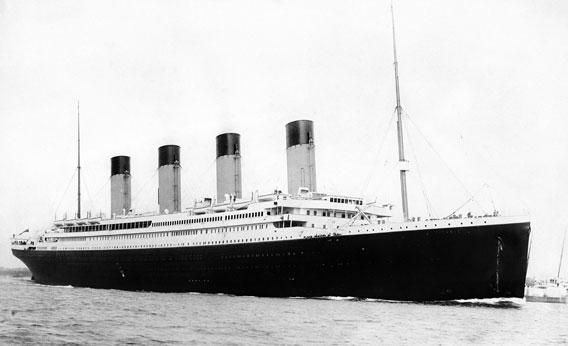Forget “women and children first”—it might have worked on the Titanic, but it’s usually every man for himself, says Mikael Elinder, an economist at Uppsala University in Sweden. His paper “Gender, Social Norms, and Survival Rates” was in PNAS last week.
Alison George: Where does the notion arise that, when a ship sinks, women and children come first?
Mikael Elinder: It appears to have started when the HMS Birkenhead ran aground off South Africa in 1852, but the notion became widespread after the sinking of the Titanic in 1912. The captain explicitly issued an order for women and children to be saved first. As a result, the survival rate for women was three times higher than for men.
AG: This idea of chivalry at sea has gained mythological status, but you’re the first person to examine if it’s true for many other maritime disasters. What did you find?
ME: We went through a list of over 100 major maritime disasters spanning three centuries to see if we could find data on survival rates of men and women. We ended up with data on 18 shipwrecks involving 15,000 passengers. In contrast to the Titanic, we found that the survival rate for men is basically double that for women. We only have data on children for a limited number of shipwrecks, but it is evident that they have really bad survival prospects: just 15 percent.
AG: What about the noble ideal that the captain and crew put the passengers first and go down with the ship?
ME: What we can see clearly is that the crew were more likely to survive than passengers, with 61 percent surviving compared to around 37 percent of male passengers. On average, the captain was more likely to survive than the passengers.
AG: So this notion of chivalry at sea is a myth?
ME: Yes. It really is every man for himself.
AG: Why do you think we bought into the “women and children first” belief?
ME: The Titanic has been so extensively studied, and it confirmed the myth. There was little empirical evidence against it. Lucy Delap of Cambridge University argues that this myth was spread by the British elite to prevent women from obtaining suffrage. They said, “Look at the Titanic. There is no reason to give women the vote because men, even when facing death, will put the interests of women first.”
AG: In fact, you’ve found that, in general, women fare worse on British ships?
ME: Yes, it has been claimed that “women and children first” is just a British phenomenon. But we found a lower survival rate for women on British ships than on ships of other nations.
AG: You are an economist. Why are you interested in shipwreck survival?
ME: Other investigations of the Titanic disaster found that even when incentives to pursue your own interests were really high—that you may die if you don’t—people can cooperate and act at the expense of their own survival. This is in contrast to models that economists have of human behavior, that people are self-interested and act to maximize their own well-being. We wanted to test these models in extreme situations by analyzing a completely new set of shipwrecks. We found that most shipwrecks are the complete opposite to what happened on the Titanic.
This article originally appeared in New Scientist.
